When Should You Change Your Running Shoes
A lot of runners who dropped by at Riovana are asking when they should change their running shoes. This is a very important question. A worn out running shoe will provide lesser protection for the runners. It provides lesser stability and lesser shock absorption capacity. This will increase your chances of having an injury. Therefore, runners should prevent having injuries by making sure their current shoes is still in good condition.
Here are some tips and signs that say you need to change your running shoes.
1. Change your running shoes every 300-500 miles (480-800 KMs). Have a training log of how much mileage your training shoes have. Once it reaches the range above, it may be time to change it. This value would vary depending on the runner’s weight, running style and running surface. Heavy built runners may change closer to the 300-mile range. Running regularly on rough road surfaces will also require you to change earlier than running them on off-road or trails regularly.
2. Listen to your body. A worn out shoe may not show visible signs that it needs to be changed but your body may start asking for a new pair. If you start having muscle fatigues, shin splits, achy knees and pains in the joint, your current running shoes may not be providing adequate protection and support. Better get a new pair before the pain gets worse.
3. Check the midsole. The midsole is where most of the protection and support is coming from. The material is softer and usually wears out faster than the outsole. Look for the creasing of the midsole material, especially under the heel, the foot arch or the ball of the foot. A worn out midsole will have wrinkles and creases there.
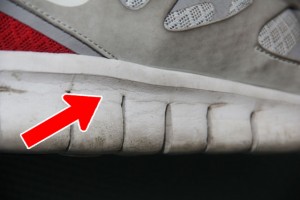
Wrinkles starting to show at the midsole
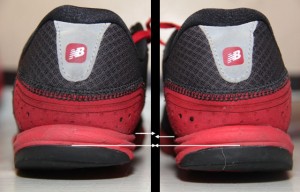
Midsole has been compressed at the heel after several use.
4. Compare with a new pair. Visit your favourite running store and try on a new pair of the model that you are currently wearing. Compare the cushioning and the stability of the new shoe with your current one. If the new one feels a lot better, then your current pair needs to be changed.
5. Check the outsoles. This may not be the best indicator but this is the most visible. Outsoles are made of more durable material and will wear out longer compared to a midsole. We suggest checking the midsoles first as described in #3. Worn out outsoles will have worn out rubber and probably show the midsoles as well.
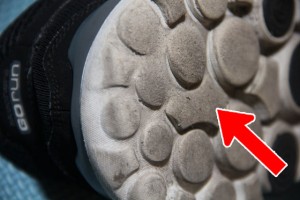
Very worn out outsoles at the heel
6. Check the balance. If one or both shoes no longer stand up straight when placed on a flat surface it means that the midsole is already over compressed. Its cushioning is no longer optimum and you would be more prone to injuries.
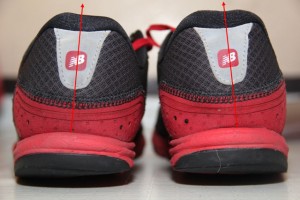
Heel counter is not upright with an old shoe
Heel counter is still upright with a new shoe
7. Torn upper material. When there is a hole on the upper material and your toes are already sticking out, the shoe is probably way past its usable life.
I hope these guides and tips will help you decide when to buy your next pair of shoes. For your next shoe purchase, you may visit Riovana stores at Katipunan and at Bonifacio Global City for a wide range of running shoe selections from top running brands and exclusive running shoe design offerings.
Keep on running.
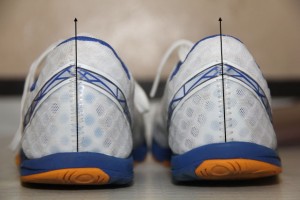
Since you are talking about shoes. does this include vibram 5 finger?.. since it have very minimal or no support for the feet. and no midsole to check(foam stuff). can you also include the vibram or other minimalist shoes such as merrel(barefoot) and new balance minimus. thanks.
I would also add inserting the hand into the shoe and feeling the insole. Usually older pairs would start to have the heel and big toe digging into it. So you would normally feel the indentation if already worn out (and could be a loss of cushioning)
🙂
Thanks for sharing Mark. I was waiting that you would add smelling the insoles too. 😀 Hehehe…
Bakit masmadaling masira ung left shoes ko ky sa sa right??
Maybe you exert more pressure on your left foot and you turn a lot to your left rather than turning right. Same tayo. My left shoe is more compress than the right because i run around in a circle.
How do runners know when to replace their running shoes ?
Click Here: http://purposedrivenrunner.blogspot.com/2012_09_01_archive.html
What is the best brand for running shoes? Thanks,
what if i ran barefoot all the time how do i know if my foot is worn out do i have to replace them also?
DCK, you can try searching in another website like getabrain.com
haha nice humor DCK
These tips answered all my questions thanks to the visual ques.